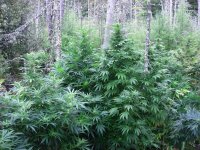I have always read that a balanced fert was best. I am using Oscomote slow release 18-6-12 this season and I am sure it works just fine not worried about that but why would you purposely do this particular ratio??
I have been a 20-20-20 guy for years so interested in the reasoning behind it and I am assuming no extra phosphorus is needed .
I have been a 20-20-20 guy for years so interested in the reasoning behind it and I am assuming no extra phosphorus is needed .




